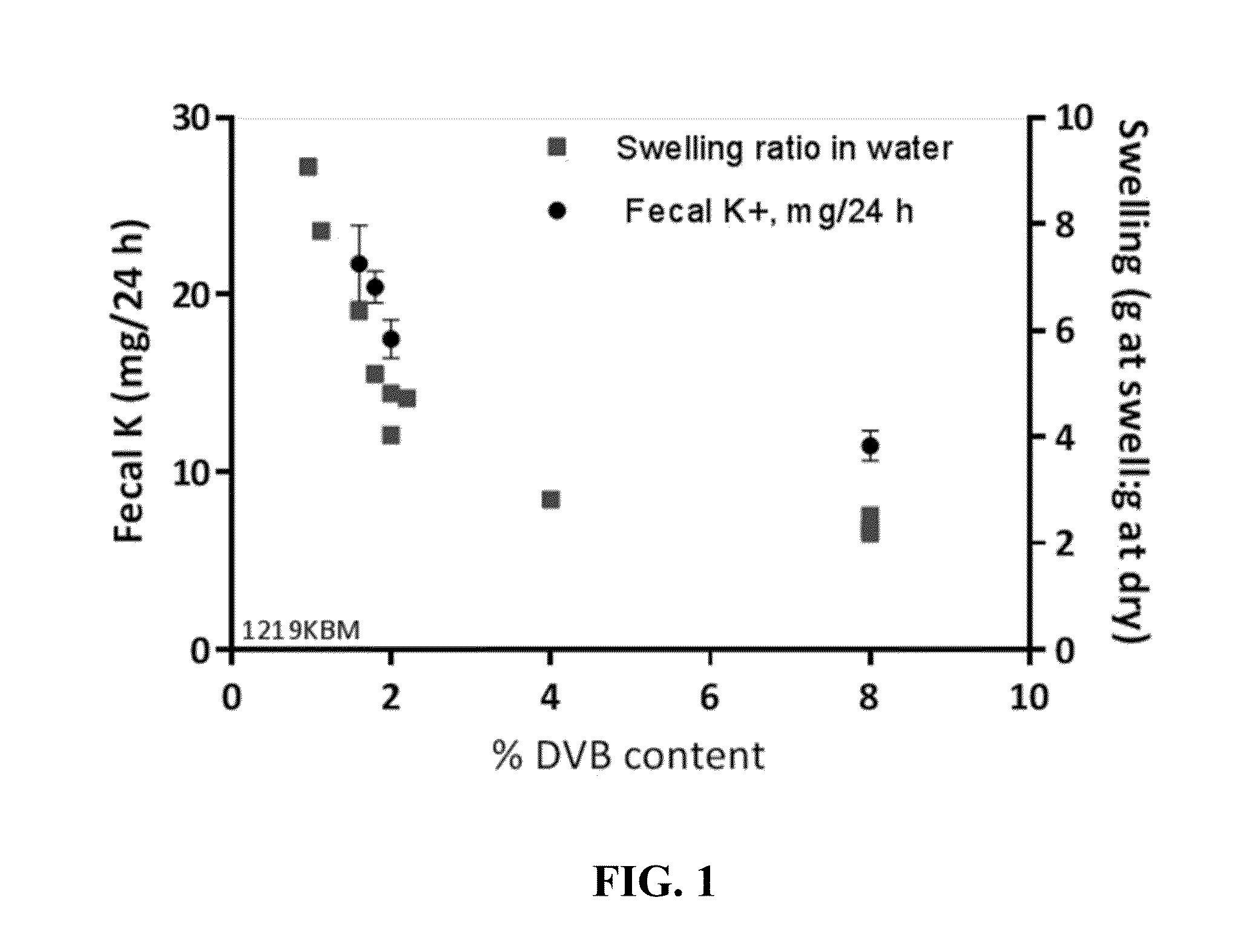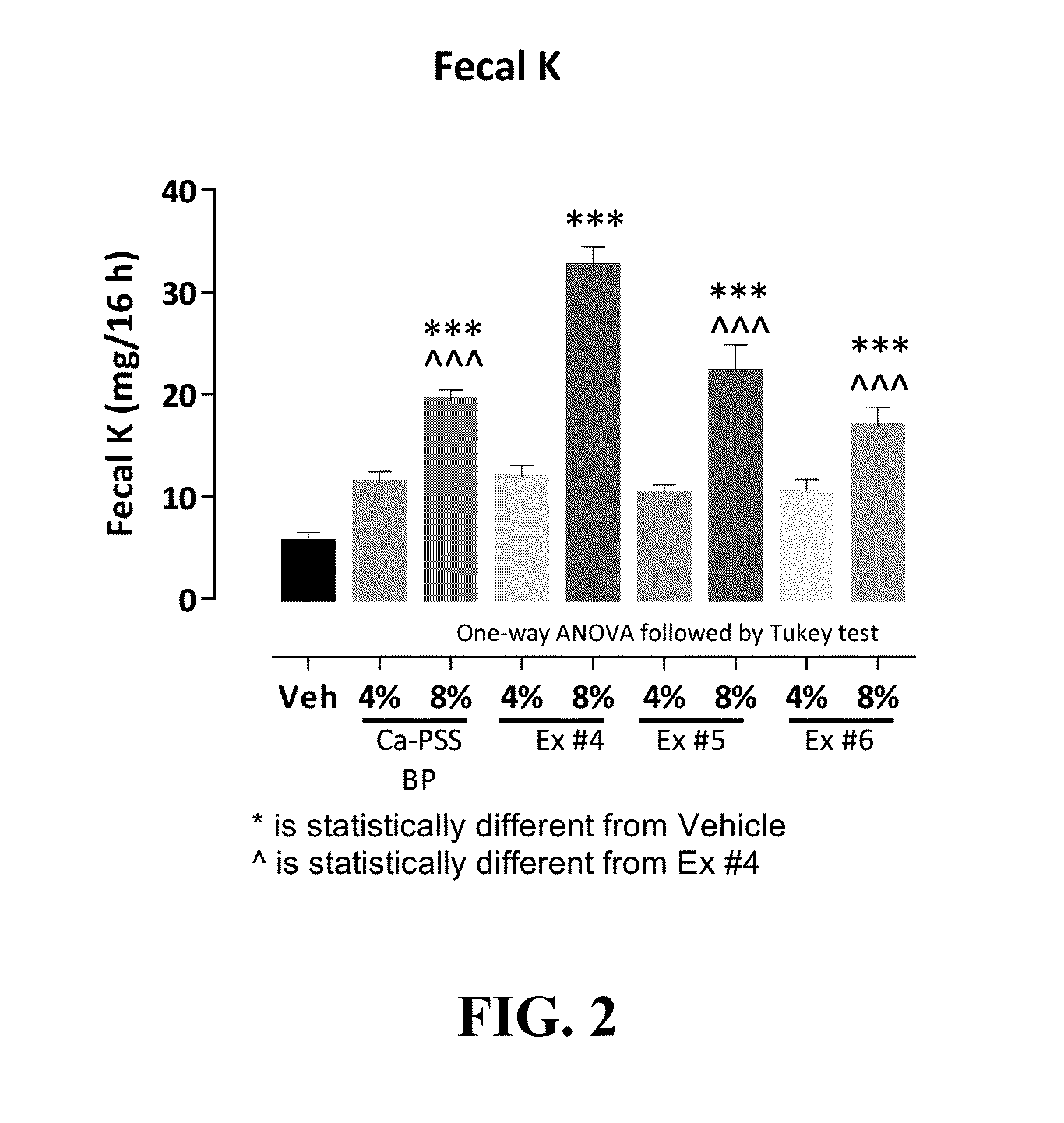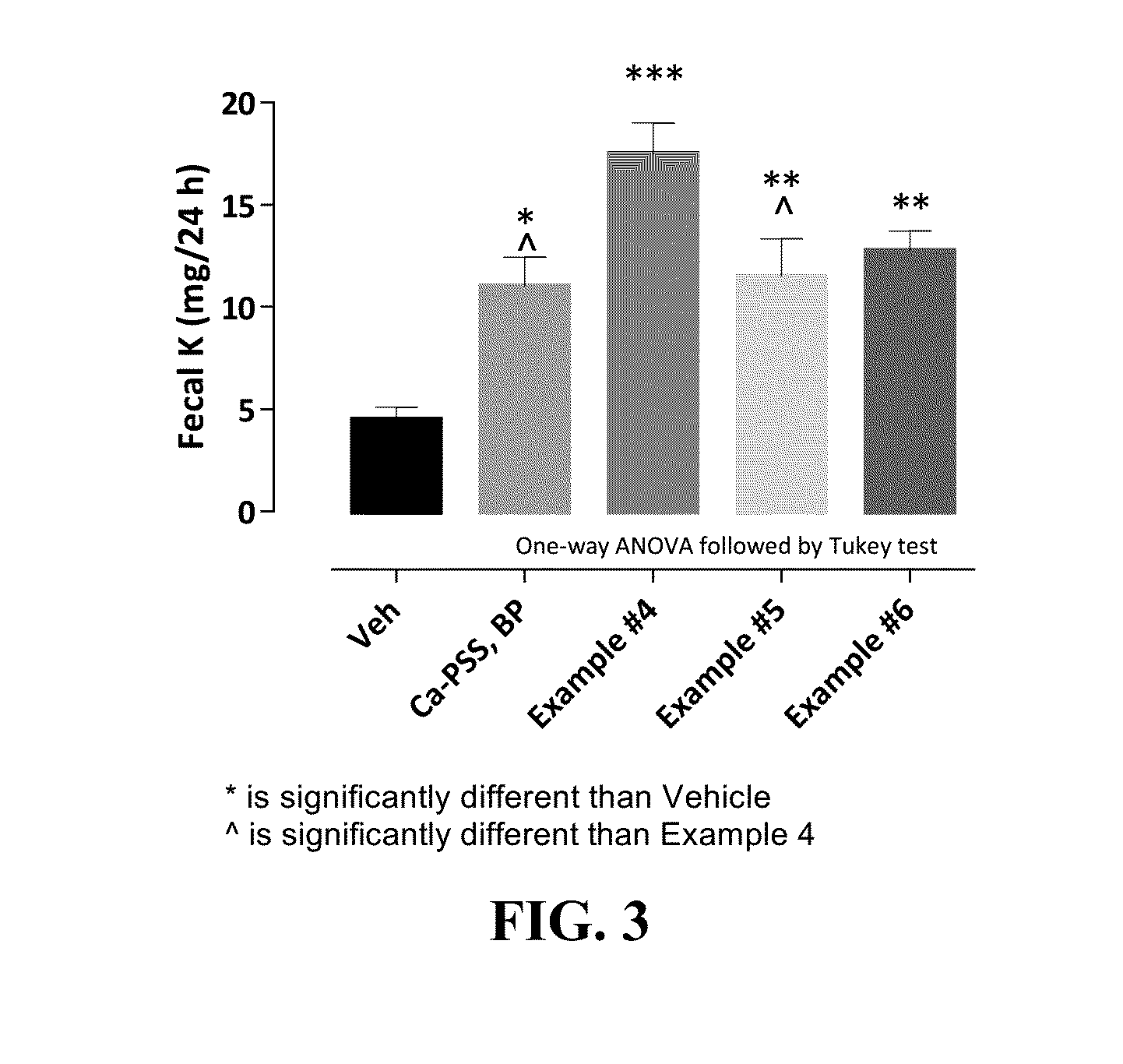Pharmaceutical compositions for treating hyperkalemia
a technology of hyperkalemia and compositions, applied in the direction of dispersed delivery, synthetic polymeric active ingredients, cation exchanger materials, etc., can solve the problems of increasing jeopardization of the kidneys' ability to maintain serum potassium levels in a physiologically normal range, impaired ability to manage total body potassium, and impaired renal function, etc., to achieve equal or significantly better efficacy, improve texture and effect, and small and more uniform particle size distribution
- Summary
- Abstract
- Description
- Claims
- Application Information
AI Technical Summary
Benefits of technology
Problems solved by technology
Method used
Image
Examples
example 1
Preparation of Calcium Polystyrene Sulfonate (Ca—PSS) with 8% DVB, 200-400 Mesh Size
[0442]Crosslinked (8%) Polystyrene sulfonate beads (200-400 mesh size) in the acid form (H+) were obtained from Sigma-Adrich (Catalog #217514). The beads (100 g, wet weight) were suspended in aqueous NaOH (1M, 300 mL) and shaken for 20 hours at 27° C., then the mixture was filtered, and the wet beads washed with water (2×300 mL). The beads were suspended in aqueous CaCl2 (0.5M, 700 mL) and shaken for 2 days at 37° C. The beads were then filtered, and suspended in fresh CaCl2 (0.5M, 700 mL), and shaken for 2 days at 37° C. The beads were then filtered, washed successively with water (3×400 mL), and dried under reduced pressure to give 56.9 g of Example 1 as a fine light brown sand. Approximate particle size range of 30-120 μm determined by digital visual microscopy.
example 2
Preparation of Calcium Polystyrene Sulfonate (Ca—PSS) with 4% DVB, 200-400 Mesh Size
[0443]Example 2 was prepared from 100 g crosslinked (4%) polystyrene sulfonate beads (200-400 mesh), H+ form, obtained from Sigma-Adrich (Catalog #217484) using the procedures described in Example 1 to give 37.1 g of Example 2 as a fine light brown powder. Approximate particle size range of 30-130 μm determined by digital visual microscopy.
example 3
Preparation of Calcium Polystyrene Sulfonate (Ca—PSS) with 2% DVB, 200-400 Mesh Size
[0444]Example 3 was prepared from 100 g crosslinked (2%) polystyrene sulfonate beads (200-400 mesh), H+ form, obtained from Sigma-Aldrich (Catalog #217476) using the procedures described in Example 1 to give 21.8 g of Example 3 as a light brown sand: Particle size: dv(0.1)=90 μm; dv(0.5)=120 μm; dv(0.9)=170 μm.
PUM
| Property | Measurement | Unit |
|---|---|---|
| median diameter | aaaaa | aaaaa |
| particle size Dv | aaaaa | aaaaa |
| particle size Dv | aaaaa | aaaaa |
Abstract
Description
Claims
Application Information
 Login to View More
Login to View More - R&D
- Intellectual Property
- Life Sciences
- Materials
- Tech Scout
- Unparalleled Data Quality
- Higher Quality Content
- 60% Fewer Hallucinations
Browse by: Latest US Patents, China's latest patents, Technical Efficacy Thesaurus, Application Domain, Technology Topic, Popular Technical Reports.
© 2025 PatSnap. All rights reserved.Legal|Privacy policy|Modern Slavery Act Transparency Statement|Sitemap|About US| Contact US: help@patsnap.com



